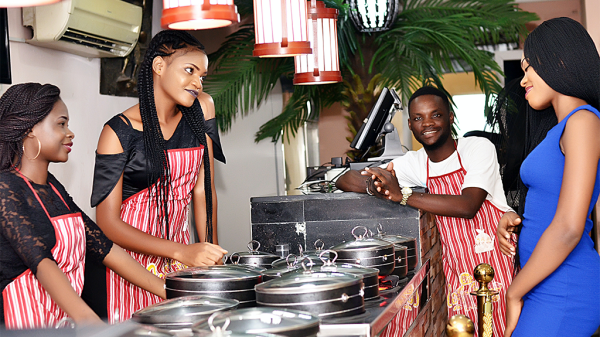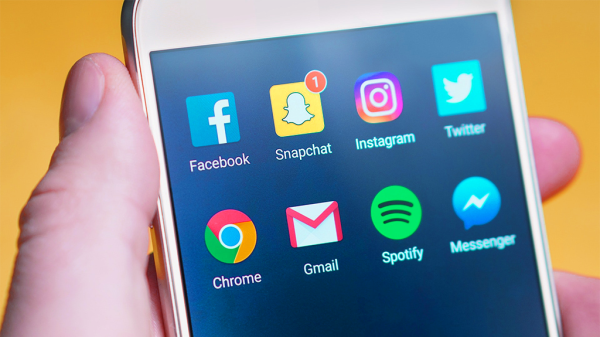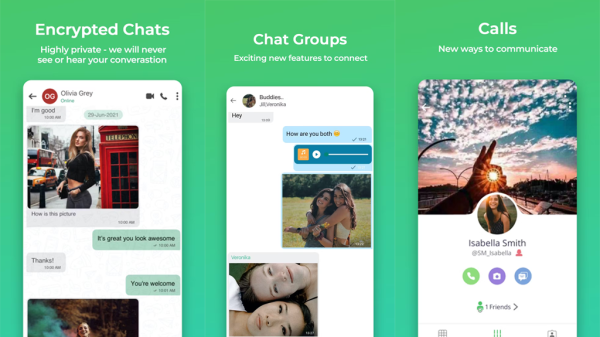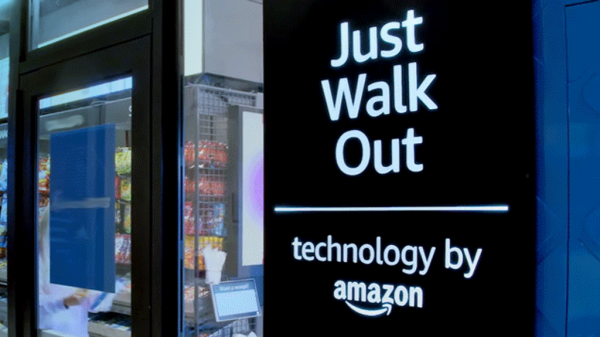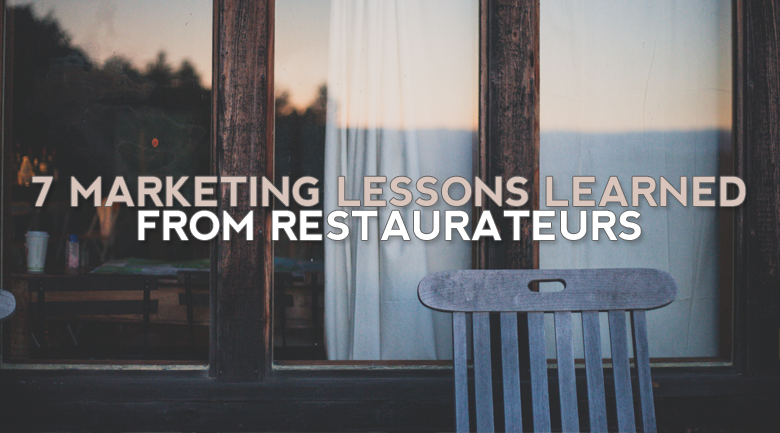
Restaurateurs are some of the ultimate entrepreneurs, taking big risks in a world with a high failure rate. But when a restaurant succeeds, it is worth looking into what they’ve done well and applying those lessons to your own industry.
Heidi Gibson is the VP of Product management at Tanjarine, which is an integrated dining and entertainment platform that allows bar and restaurant guests to order from digital menus, play games and music, and pay from tablets at their tables. Gibson is swimming in the world of restaurateurs (including her own kick ass grilled cheese restaurant chain in San Francisco) every day and is part of the technology shift inside the walls of our favorite eateries. In her own words below, she offers the top seven marketing lessons that can be learned from restaurateurs.
1. Customers increasingly want and value self-service/do-it-yourself options. Technology is facilitating a shift in restaurants towards customer-driven service. Customers, especially millenials but not limited to, want what they want when they want it. Online/in-line/mobile pre-ordering/kiosks and tabletop tablets are increasingly popular for that DIY mindset. Restaurants were afraid the guests would view technology replacing humans as a negative, but they don’t – it’s a positive, and it frees humans up to be personable and responsive instead of pushing buttons on a POS. How can customer-driven service, with your customers defining when and how they interact with your product and employees, improve your relationship with your customers?
![]()
2. Loyalty programs work and create brand ambassadors. Loyalty programs are widespread in the restaurant industry, and for good reason: they work. There are a lot of stats available proving this point. Customers love special attention and loyalty programs let you reward your best/repeat customers and motivate those who have fallen off the radar. Can you identify your most valuable customers? What programs can you put in place to reward them and motivate them to continue to be proponents of your brand? Another key piece of loyalty programs is that this is almost the only way restaurants can communicate to their guests when they’re out of restaurant. Surveys and direct mail does work but since guests are opting in to say – “talk to me” – then using technology in venue to facilitate that request is saying that the restaurant is paying attention the guests’ needs.
3. Timing is everything. Restaurants have to adjust their product mix, pricing and marketing tactics to react to seasonality, time of day, and other external factors that affect their business – even the weather is taken into account. Your business may not be affected by snows and heat waves, but external factors that change over time affect every business. Figure out what your ‘seasonality’ is, what changing external factors influence your customers’ purchase decisions, and pay attention to those things so you can pivot and adapt in a changing world. Offer what your customers want when they want it.
4. Create community! It’s no coincidence that the rise of restaurants leveraging Facebook, Twitter and Instagram came at the same time as the ‘communal table’ trend in restaurant design. Social media changed the nature of restaurants’ customer communications from one-way broadcasts (emails, TV ads, table tents, etc) into 3-way conversations between the restaurant and between the customers themselves. Restaurants quickly realized the power that creating customer community can bring, and began changing the very way guests are seated to facilitate that same sense of community and conversation inside the restaurant as well as online. Restaurants that do this well have created valuable emotional brand value, at zero cost. How can you facilitate your customers creating a community around your brand and product experience?
5. Segment and target. You can’t be all things to all people; sorry, but it’s true. In the hyper-competitive world of restaurants, this is never truer. Carefully segment your potential customers and focus hard on serving specific targets well rather than trying to address every possible need of everyone walking past the front door. Restaurants get 80% of their profits from 20% of their products, so the best ones pick the products that their target market values most and excels at delivering.
6. Be internally consistent. When you walk into a fine dining restaurants, the prices are high, the presentation is crafted, the servers are in crisp identical uniforms, and the bathrooms are nice – right? The website, the décor, the music and even the fonts on the menu all back up the market positioning as ‘fine dining’. When you hit up the local roadside BBQ joint, you have a different set of expectations – service will be fast, décor lower end, the bathroom won’t be fancy (but hopefully clean – and people DO rate service and kitchen quality with bathrooms) and if there are servers at all they’re wearing tshirts and jeans. It’s intuitively obvious in a restaurant, but a lot of other businesses don’t figure this out: every single thing you do, every detail that a customer sees and interacts with (including messaging), must reinforce your brand promise or you sow distrust with your potential customers. Imagine walking into that upscale fine dining restaurant and loud punk rock is blaring over the music system… or a waiter in a tuxedo brings you your brisket plate while you sit on a pine bench next to the smoker on the back deck. Be clear who your product is for and how you fit into their expectations, and examine every single thing you do to make sure it reinforces those expectations. Bottom line, be true to yourself (brand and identity) AND you customer!
7. Know who your real competition is, and how you fit into the ecosystem. I (Heidi) own a small chain of grilled cheese restaurants in San Francisco, and people think my big competitor is the other grilled cheese themed chain in town. Wrong! When I surveyed my target customers on their lunchtime dining habits, it turns out they won’t go more than 2 blocks from their office, so my competition is actually the other casual lunch spots within a 4 block radius – and the other grilled cheese place is clear across town. We only compete in the press and on Yelp, not in reality. Also in reality, and maybe counter-intuitively, my shops do best they’re located near other similarly-priced lunch destinations… being close to my competition helps me. Together we draw more traffic into the neighborhood than we would on our own, and over time we’ve evolved our menus to complement rather than directly compete. I think this nuanced understanding of competition, and realizing you operate in an ecosystem of products and offers, can help entrepreneurs in other industries optimize revenues and minimize marketing expenses.
The American Genius is news, insights, tools, and inspiration for business owners and professionals. AG condenses information on technology, business, social media, startups, economics and more, so you don’t have to.












